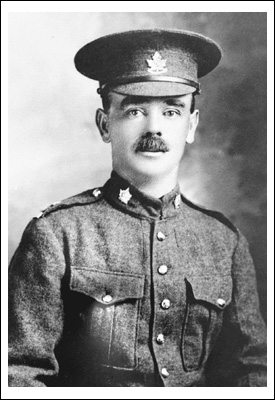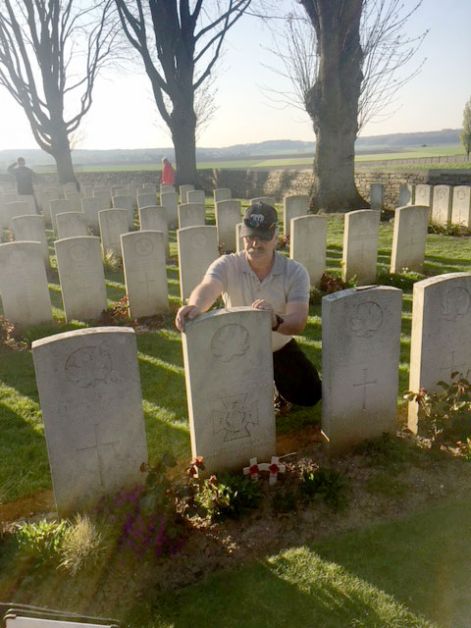
A Delia man went on an emotional journey last spring when he visited the grave of his great-grandfather who was awarded the Victoria Cross for Valour in World War 1.
The Mail brought readers the story of the DVSS students who travelled to Vimy last spring to celebrate the centennial of that nation-defining battle. On the trip, members of the Bertsch family visited the grave of John George Pattison, to which whom they are related.
Robert Bancroft told The Mail he was there too, just days before, and in fact, Pattison was his great-grandfather, one of only four to receive the Victoria Cross at Vimy.
“It still kind of brings tears to my eyes,” said Bancroft of the experience in Vimy. “I have never cried so much for someone I never met. It was a great honour.”
Bancroft tells The Mail the story of Pattison. Originally, it was not him, but his grandfather John Henry Pattison who joined up in Calgary. The problem was he was only 15 years old.
“They were getting ready to send him to Europe, and my great-grandfather (John George) found out about it and said, ‘if he is going, so am I,’” said Bancroft.
“They never said anything to the enlisters until they got to England, and then they informed him that he was 15 and was held back.”
John George, however, continued on his tour in the military and went to Vimy as a member of the 50th Infantry Battalion. This is where he became a war hero.
On April 10, 1917, in the area called Hill 145, he was part of an advancement of Canadian troops that was held up by damaging machine gun fire. According to his citation:
“For most conspicuous bravery in attack.
When the advance of our troops was held up by an enemy machine gun, which was inflicting severe casualties, Pte. Pattison, with utter disregard of his own safety, sprang forward and, jumping from shell-hole to shell-hole, reached cover within 30 yards of the enemy gun.
From this point, in face of heavy fire, he hurled bombs, killing and wounding some of the crew, then rushed forward, overcoming and bayonetting the surviving five gunners.
His valour and initiative undoubtedly saved the situation and made possible the further advance to the objective.”
He survived the attack, but seven weeks later he became a casualty of war. On June 3, he was killed in an attack on a German-held Generating Station near Lens, France.
“What happened there, and I got this from my cousin in Toronto, John George was covering a retreating action, with two other soldiers. He was covering that to allow the rest of the battalion to escape. He held the position and was wounded and died. It was actually the Germans who buried him on the spot.”
He was later interred in the Chaudière Military Cemetery.
He was awarded the medal posthumously. The Pattison Bridge in Calgary is named after him as well as a Mountain in Jasper National Park.
Bancroft tells The Mail that his medal is currently in the Glenbow Museum collection. His uncle spent many years trying to get the medal back for the family.
Bancroft explains that it was tradition that the first-born son was to receive the medals when awarded posthumously, however it went to Pattison’s widow.
He does have a number of documents and items from his great-grandfather he is planning to donate to the Military Museums in Calgary.




























